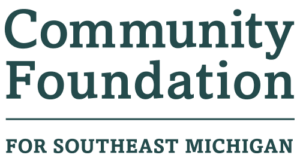Treatment Principles
An Emergency Medicine Guide to Medication for Opioid Use Disorder
Session originally hosted March 2024.
To understand how to treat patients with opioid use disorder (OUD) in the emergency department (ED), providers must first grasp the pharmacology of three medications: naltrexone, methadone, and buprenorphine. Buprenorphine in particular is the most important medication for emergency medicine providers to understand as it can be prescribed from the ED and is highly effective in treating OUD in this setting.
In this training, we will walk through the structure of a treatment pathway for the ED. While specifics may vary, each pathway typically involves identifying OUD, scoring withdrawal severity, providing an initial dose of buprenorphine, a period of observation, providing subsequent doses of buprenorphine to resolve additional withdrawal, arranging follow up care, and ensuring a prescription of buprenorphine is provided until the follow up visit. By the end of this training, you should be equipped to explain OUD treatment principles, including why long-term medical treatment can lead to significantly higher rates of long-term recovery and harm reduction.
At the conclusion of this training, learners should be able to:
- Explain the pharmacology of methadone, naltrexone, and buprenorphine.
- List the major common steps in emergency department medication for opioid use disorder pathways.
- Examine the advantage medication for opioid use disorder provides those with opioid use disorder with long term therapy.
1 CME Credit. These opportunities also count toward the DEA eight-hour training requirement on the treatment and management of patients with opioid or other substance use disorders.
Presenters: Jacob Manteuffel, MD and Nick Rademacher, MD
Original Release Date: March 6, 2024
Termination Date: March 5, 2027
Accreditation Statement: This activity has been planned and implemented in accordance with the accreditation requirements and policies of the Accreditation Council for Continuing Medical Education (ACCME) through the joint providership of MyMichigan Health and Michigan Health & Hospital Association. MyMichigan Health is accredited by the Michigan State Medical Society to provide continuing medical education for physicians. MyMichigan Health designates this activity for a maximum of 1 AMA PRA Category I Credit(s)TM. Physicians should claim only the credit commensurate with the extent of their participation in the activity.
Disclosure Statement: Planners, faculty, and others in control of content (either individually or as a group) have no relevant financial relationships with ineligible companies.
Note: Continuing medical education (CME) credits were pursued by the MHA Keystone Center, Please reach out to keystone@mha.org with questions.


